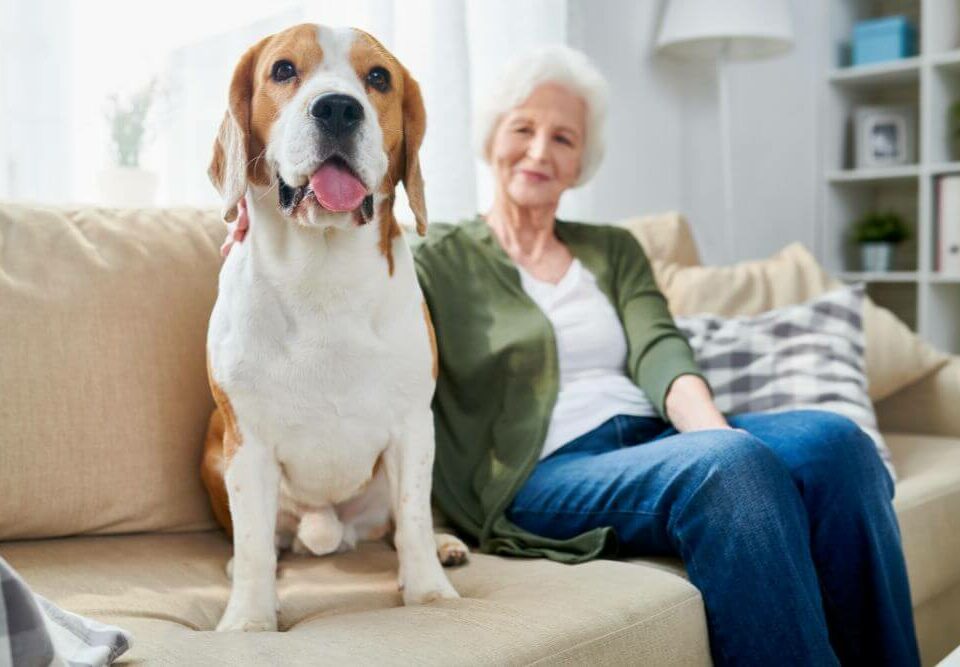How Much Does it Cost to Put a Cat to Sleep?
August 16, 2018
How To Tell If A Dog Is In Pain
September 5, 2018
Dog Lymphoma – When to Euthanise and What Your Dog Will Feel. You’re sitting in your vet’s clinic when they tell you: your dog has cancer. You have some options. And now you have some heartrending decisions to make.
For any pet owner, it’s the worst of all possible news. Many find it impossible to get their head around. But for the sake of your pet, you have to try.
Because the last thing you want is for them to be suffering and you not to know it. Many signs of suffering in dogs will be obvious as they’ll be drastic changes in their usual temperament or activities. It’s important to watch out for these.
But after you receive a diagnosis, you need to be prepared to act. How to act is up to you. For most people, tragically, a determination of dog lymphoma means one question:
When is it time to euthanise?
Dog lymphoma stages and types
Understanding your dog’s condition should come first. There are several different types of canine lymphoma:
- Mediastinal: this affects how your dog’s lungs work as it develops in the lymph tissue of the chest. This can result in breathing problems.
- Gastrointestinal: lymphoma of the gastrointestinal tract can affect your dog’s bowels and cause related health dangers.
- Cutaneous: lymphoma of the skin tissue is usually the most obvious to diagnose as it can sometimes be seen and felt as red lumps on the skin.
- Extranodal: this is rare, but lymphoma can actually affect any part of your dog’s lymph tissue. Bones, liver, mouth, eyes. Sadly, this illness doesn’t take prisoners.
There are several stages of dog lymphoma. You should always consult your vet to learn more. They are best placed to advise and inform you.
Lymphoma in Dogs: Final Stages and Warning Signs to Watch out For
But arguably the stages which you need to be most aware of those in the final phases where your dog will be suffering. These are the times where you really need to be paying close attention to their condition, watching out for:
- A complete lack of appetite
- Difficulty breathing, often characterised as laboured panting
- Inability to reach the bathroom or incontinence
- Discomfort and restlessness
- Inability or unwillingness to move
- Glassy eyes
- Behavioural changes, such as a desire to hide away from you
Any and all of these are signs in dog lymphoma that when to euthanise is now.
Possible treatments – should you fight?
If discovered early enough, the decision as to whether you, your pet and your vet can work together to fight this will always be a personal one. Your vet will be in the best position as to give you your options. The first advice which most people who have been in your position before have to offer is clear:
Ask lots of questions. Make sure you know where you stand.
Because there will likely be many factors at play in your final decision, not least:
- Potential quality of life for your dog both during and after their treatment
- The age of your pet
- Your dog’s health
- Sadly, your budget as canine lymphoma treatments can be expensive
Even successful treatment can reduce a dog’s lifespan to a maximum of two years. This only after chemotherapy or extensive medication. But there are situations where treatment can lead to a positive outcome, especially for younger dogs.
It’s important, however, that any advice you receive – even advice in this article – is viewed through the lens of what is best for you, your dog and everyone involved in your personal situation.
Never feel like you are making a decision due to external pressure. Make no mistake though, that a decision will be needed. And sooner is better than later.
Dog lymphoma – when to euthanise
A sudden, heartbreaking decision
One of the worst things about a canine cancer diagnosis is how suddenly the news can break over you. One day, they seem old and perhaps a little frail but nothing more. Then you’re sitting in your vet’s clinic with this professional explaining that they may deteriorate very quickly. Four to eight weeks is the standard life expectancy after first symptoms are noticeable.
This is all the worse as the discrepancy between most human and dog lifespans is so large. Even the most long-lived dogs will live less than two decades. It can leave you feeling like you’ve been cheated out of time that you deserved to have together.
Allowing your beloved companion dignity in the end
Time is a factor though. Most dog lymphoma end of life symptoms share the fact that they will lead to final days which be ones of suffering for your pet.
They can become so weak that they will be unable to stand or move – even to relieve themselves. They can also forget who you are entirely or become disorientated and scared by familiar environments. That’s not anything you would wish anyone to experience, let alone your faithful friend.
The difference between living for them and them living for you
For most dog lovers, the expectation of loss may leave them completely inconsolable. This can make it easy to try to mentally justify anything which will give you just a few more weeks, a few more days, a few more hours with your beloved companion.
When you’re trying to grapple with the impossible decision of when to euthanise a dog with cancer, the most difficult yet perhaps most vital thing is to try to put aside your own fear of being without them. Separating your pain from their pain, as it were. Because when it comes down to it, are you willing to force your pet to suffer pain just so that you can go another few hours or days with them?
For most dog lovers, realising they could be forcing their companion to live on for reasons which are, while perfectly natural, perhaps a little selfish is key to being able to move forward.
The realisation that they are in fact freeing their pet from pain is an important part of the process. When you are reacting to your dog’s feelings and needs and not your own, you will be in the best position to know when to say a final goodbye.





